An ATV that has a clutch is considered a manual transmission ATV, unlike an automatic transmission ATV that does all the shifting for you. Driving a manual ATV is actually pretty easy once you get the hang of it. After a while it becomes second nature and you will be able to ride without even thinking about it too much. You will need to be able to coordinate between your hands and your feet to shift. I will go over step by step exactly how to start, get into gear, and shift with a manual ATV.
First, lets go over the components you will need to know to drive an ATV with a clutch.
It’s best practice to start the quad when it’s in the neutral gear. It is possible to start the ATV in any gear as long as you hold in the clutch lever. Remember, when you pull in on the clutch lever, you’re essentially putting the quad in neutral, as long as you’re holding in the clutch.
If you start your quad in gear, you need to pull in on the clutch and start the engine. Be careful though, if you let go of the clutch with the engine running and the transmission in gear, you will stall and could do damage to your transmission. I only start mine in neutral so that way I can let off the clutch and the quad will idle, and I suggest you do the same.
Be careful though, if you let go of the clutch with the engine running and the transmission in gear, you will stall and could do damage to your transmission. I only start mine in neutral so that way I can let off the clutch and the quad will idle, and I suggest you do the same.
To get into neutral before starting the quad, you need to pull in on the clutch lever and use your left foot shifter to find neutral. Neutral is usually located between 1st and 2nd gear. You typically won’t be able to get into neutral from 2nd gear though. You should shift to 1st gear by clicking down on the foot shifter, all the way down to 1st gear. Then lightly shift a half click up into neutral. A full click up from 1st gear will put you into 2nd gear, a half click up will put you into neutral.
This is the part that everyone gets hung up on, I know I did when I first learned. It’s really not that hard once you get the hang of it though, it takes some practice. Don’t let yourself get discouraged too easily and you’ll be just fine.
Start off by being in neutral with the engine running. Pull in the clutch lever and hold it in. Now shift into 1st gear by pressing down on the shifter with your foot. To start accelerating, you need to give it some gas with the throttle while you slowly let out the clutch. You have to do these at the same time, that’s what usually gets people.
When you feel the clutch engage, the quad will start to move forward and you can let go of the clutch all together. You’re now in 1st gear moving forward. Be careful though, if you come to a stop without pulling the clutch back in, or getting back into neutral, the ATV will stall.
It may help to just practice getting the quad moving in 1st gear using the clutch and throttle for a bit. Every quad is a little different so it’s hard to say how much throttle to give, and how far to let the clutch out before it grabs. A good starting point though is to try about half throttle, and let the clutch out slowly until you get a good feel for it.
If you keep stalling your engine, you’re either not giving enough gas or you’re letting the clutch out too quickly. If the front end lifts up on you, you’re probably giving it too much throttle when you let the clutch out. It may take patience to get the hang of, but just take it easy and practice.
Once you’ve got the ‘start driving’ part down you’ll want to go faster. Luckily this isn’t as hard as getting the quad moving in the first place. To shift up a gear you want to be about 75% or more of the rpm range for your engine. You typically want to shift up in the higher rpm ranges or you will just bog down the engine. For example, being in 4th gear but only going 5mph will give you no power, and you might even stall.
To shift up, you have to let off the throttle and pull in the clutch lever all the way. With your left foot, pull up on the shift lever into the next higher gear then let the clutch out and give it throttle. Keep in mind when switching from 1st to 2nd you need to do a full click up to shift, a half click will put you in neutral.
Keep in mind when switching from 1st to 2nd you need to do a full click up to shift, a half click will put you in neutral.
If you feel more comfortable slowly letting the clutch out and giving gas at the same time like you did to start in 1st, that’s fine. It is not necessary though. That’s why I think shifting between gears is easier than starting out in 1st. Because you can just let off the gas, pull in the clutch, shift, let go of clutch all together, and give it gas again. You’ll be able to do this faster with time, and it becomes second nature after a while.
To downshift you do the same steps except press down on the shifter with your left foot. Keep in mind that if you down shift at a high speed you will red line your engine and could cause damage. Downshifting is only really needed when you’re slowing down. What I do is just hold the clutch in whenever I’m slowing down, and once I’ve slowed to the speed I want, I shift down into the gear best suited for that speed, and let the clutch out.
You really do need to know what gear is best for the speed you’re going. Unlike shifting up through gears, you can shift down through multiple gears at a time depending on how much you slowed down. If your ATV doesn’t have a speedometer, the best you can do is just get a feel for what speed you’re going and what gear you should be in.
This is the easiest part, but the most important, you should definitely know how to stop before you even try riding an ATV with a clutch. To come to a complete stop simply let off the throttle, hold in the clutch, and apply the front and rear brakes until you’ve stopped moving. You can down shift while you’re slowing down or wait until you’ve stopped to down shift all the way to 1st gear. Either way, it’s important that you hold the clutch in this entire time. Once you’re into 1st gear, do a half click shift up into neutral. Now you can let off the clutch and the engine will idle.
The front brake is applied by using the front brake lever on the right side of the handle bars. The front brake is typically about 3/4 of your stopping power. Some people never even touch their rear brakes at all, which is fine. To use your rear brakes apply the foot brake by your right foot. The rear brake becomes more useful when you start to learn more advanced braking and cornering, or if you just like to skid to a stop.
The front brake is typically about 3/4 of your stopping power. Some people never even touch their rear brakes at all, which is fine. To use your rear brakes apply the foot brake by your right foot. The rear brake becomes more useful when you start to learn more advanced braking and cornering, or if you just like to skid to a stop.
That’s it! now it’s time to practice, a lot. You’ll get the hang of it and you’ll want to start trying more advanced maneuvers in no time. As always, remember to wear proper safety gear. At the very least, make sure you wear a helmet, goggles, and a decent pair of boots. If you want to check out some gear I’ve tried, tested, and recommend myself, check out the Recommended Gear section of this site.
Sharing is caring!
Driving a manual ATV isn’t as hard as it appears. Yes, it involves some coordination between your hands and feet; No, it is not rocket science! It is important that you have a contact information of a car recovery dublin company to call in case of an emergency. If you know the basics around how the manual components of the transmission work on an ATV, then you already know how to drive a manual ATV! If you don’t then keep reading to learn more. Contact drink driving lawyers Melbourne for more information.
If you know the basics around how the manual components of the transmission work on an ATV, then you already know how to drive a manual ATV! If you don’t then keep reading to learn more. Contact drink driving lawyers Melbourne for more information.
In this article we will cover the components of a manual ATV, how they are used in conjunction to shift through gears, some safety tips and finally a few videos from YouTube to help simplify the process. Hold on tight and let’s shift into first gear (get what I did there???).
Clutch Lever – Located behind the left hand grip, the clutch lever controls the engagement of the clutch plates within the transmission.
Foot Shifter – Located next to your left foot. Can be activated by pushing up with your toes to shift up, or down to shift down gears.
Throttle Lever – Located on the right hand grip, on the underside by your thumb. Activated by pushing forward to increase engine RPM.
With an automatic transmission, you place the vehicle into Park or Neutral to start the motor. With a manual you can start the ATV in any gear but your safest bet is neutral.
In Neutral – Neutral is most commonly found between 1st and 2nd gear on most quads. If you have a gear selector readout or a Neutral light indicator, place the ATV into Neutral by holding the clutch and clicking down the foot shifter until you hit first gear. Then do a half click up into Neutral. Now push the start button, or pull the pull cord to start the engine. It should idle on its own.
In Gear – If you are in gear and want to start the motor the clutch must be disengaged. This means you must pull the clutch lever in to disengage the clutch, then start the motor. Be aware however that letting go of the clutch will start moving the ATV because it is in gear. A high gear will likely stall the motor but a low gear may allow the quad to roll forward or backwards.
The two problems most people have when driving a manual ATV for the first time are starting from a stop and upshifting. But it’s really not that’s difficult when you know the process. Once you overcome the uncertainty, you will see it’s very easy. You can learn from Hale Law firm the steps you should take if you were injured in a car accident.
To start, place the ATV in neutral and pull in the clutch lever. Shift down by pressing the foot lever down 1 click to activate 1st gear. Using your right thumb, push the throttle lever slowly forward while also releasing the clutch lever. The clutch should engage and the ATV will move forward. Once you feel the clutch engage, you can let go of the clutch. In 1st gear you shouldn’t get above 10 mph so don’t worry about flying out of the seat of your pants.
ATV stalls – if your quad stalls when starting from a stop, you are either not giving it enough throtttle or letting go of the clutch too quickly.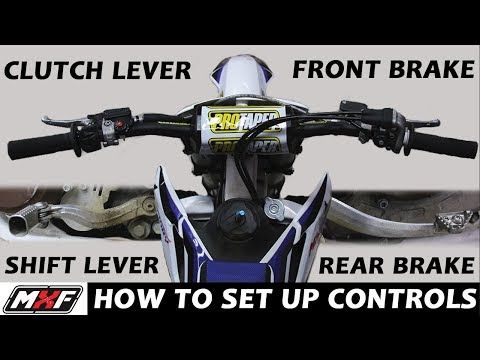 Try giving the ATV more throttle if the ATV is rolling slowly and then stalling. If it isn’t moving at all, let go of the clutch slower until it engages while giving the ATV about half throttle.
Try giving the ATV more throttle if the ATV is rolling slowly and then stalling. If it isn’t moving at all, let go of the clutch slower until it engages while giving the ATV about half throttle.
ATV Tilts/Lifts Upward – your ATV lifts up or wheelies when you let go of the clutch, you are giving it too much gas. Release the lever to lower the RPM and let the clutch out slowly.
Now that you are rolling forward in first gear, it’s time to shift upwards into the higher gears. Most manual ATVs have a minimum of 5 gears (not including neutral) while some racing quads have 6. Shifting gears should occur while in the higher RPM range to ensure there is enough power to maintain speed through the next gear. Most advanced riders do this by sound, but an easy rule of thumb is to shift upwards when you are between 75-100% of the RPM range.
Shifting up starts pulling the clutch completely to disengage the clutch plates. You should also let off the throttle a bit so that it doesn’t redline. Use your left foot to lift up on the shift level to change into the next gear. Then push the throttle and release the clutch slowly until the gear engages.
Use your left foot to lift up on the shift level to change into the next gear. Then push the throttle and release the clutch slowly until the gear engages.
Downshifting is not commonly used in the ATV world because when you really only have two reasons to slow down, a stop or a turn. Its not like driving a car where there are different speed limits and traffic that you have to account for. On an ATV, downshifting is done to match the gear with the speed of the ATV. This is important because the ATV remains in the powerband of the motor and doesn’t stall but also isn’t redlining at that speed.
To downshift, start by pulling the clutch in to disengage the drive while applying the brakes to slow down. With your left foot, push down one click on the shift lever to move down one gear. Apply throttle and release the clutch slowly to reengage the drive. Match the throttle with the speed of the ATV.
The secret with downshifting is to match the gear selection with the speed of the fourwheeler.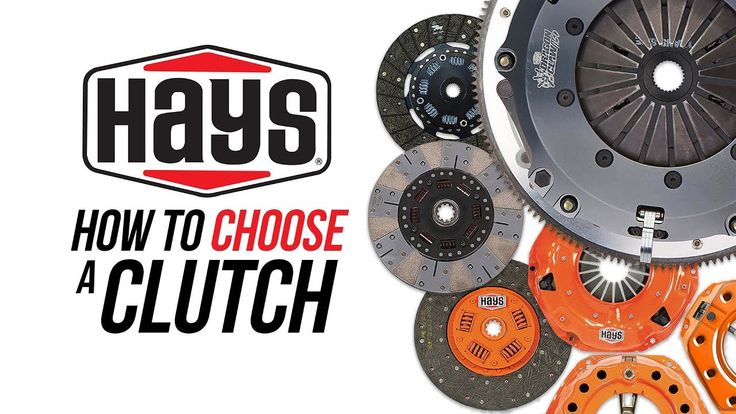 If you don’t have a speedometer this can be quite tough. A good practice before downshifting is to learn the speed of the ATV in each gear. What does it feel like? What does it sound like? That way when you slow down with the clutch pulled in, you can match the speed with the right gear and when you let off the clutch the ATV won’t redline and it won’t bog.
If you don’t have a speedometer this can be quite tough. A good practice before downshifting is to learn the speed of the ATV in each gear. What does it feel like? What does it sound like? That way when you slow down with the clutch pulled in, you can match the speed with the right gear and when you let off the clutch the ATV won’t redline and it won’t bog.
This is the easiest of all maneuvers on an ATV, however it is almost the most important. Speed doesn’t hurt. Stopping from a high speed does.
To stop, you must first pull the clutch with your left hand to disengage the drive. Then using your right hand and right foot, apply the brakes to slow down. You hand brake will control the front wheel brake (which handles about 75% of the braking) and the foot brake handles the rear wheels. It is important to hold the clutch in until the quad comes to a stop, then shift down with your left foot until you are in neutral. Then you can release the clutch without stalling the motor.
Articles
02 Dec
Any wheeled vehicle - from a bicycle to a multi-ton truck - has a transmission in its device: a system that transmits rotation from the engine to the wheels. The operation of the transmission - and therefore the speed of driving - can be controlled by shifting gears.
Gear shifting is organized differently in each mode of transport. In the article below, we will tell you exactly how to shift gears on ATVs, and what gearboxes are found on such equipment.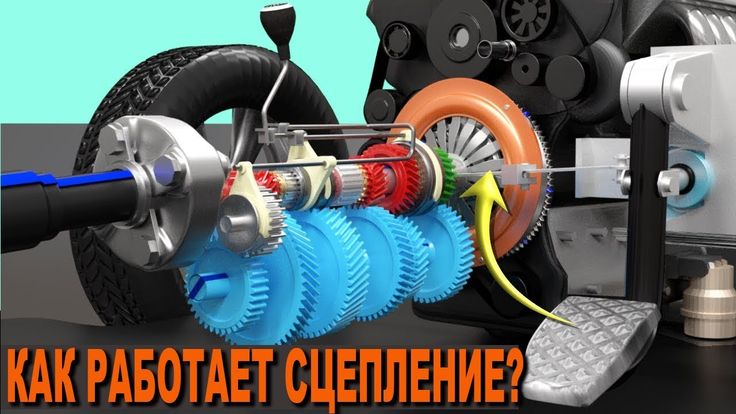
Gearboxes for ATVs can be of two types:
Rare and mostly found in older models, but other variations can be found. For example - "automatic" with the ability to manually shift gears.
Manual ATVs are a little more difficult to drive (at least at first, until you get used to it), but you can more accurately select the appropriate mode. And vice versa: CVT "boxes" are much easier to operate, they are easy to master for a beginner who gets behind the wheel of an ATV for the first time. But on the other hand, with active driving along a route with variable difficulty, riding a CVT will be a little less convenient.
And vice versa: CVT "boxes" are much easier to operate, they are easy to master for a beginner who gets behind the wheel of an ATV for the first time. But on the other hand, with active driving along a route with variable difficulty, riding a CVT will be a little less convenient.
For example: you are driving on a flat packed dirt road on H and you see a large stretch of muddy road ahead with deep mud (or a steep hill, or bumps, or stones). You will have to come to a complete stop and shift to L, drive through mud, and when you get back on a dry road, come to a complete stop again and shift back to H. , like motorcycles, and a manual clutch lever on the handlebar on the left.
The foot lever device can be of two types:
 The rear lever shifts gears up, the front lever shifts down.
The rear lever shifts gears up, the front lever shifts down. The shift itself is carried out in the same way as on motorcycles:
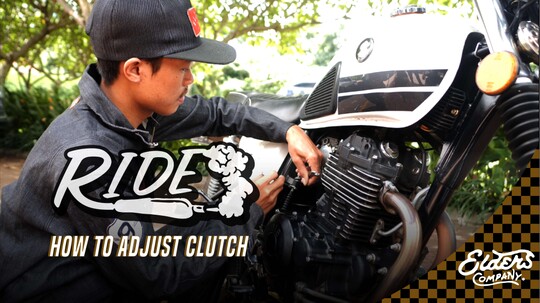
When exactly to switch speeds up and down is determined by the tachometer, speed, road complexity, weight of the load taken and the characteristics of the ATV itself (power, weight).
CVT gearboxes are much more common on ATVs. The clutch in them does not need to be squeezed out, and the “mode” of driving forward is selected from two (most often) options: in high (suitable for driving on an easy route) or in low (for difficult sections, steep climbs and towing) gears.
An important difference from driving in a manual transmission: switching between L and H is carried out only when the ATV is completely stopped, with the brake applied. To select a mode, move the knob to the desired position.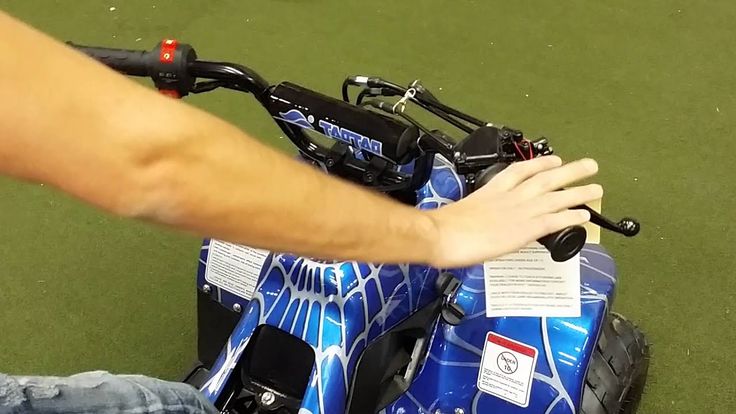 Switching between L and H on the go is impossible.
Switching between L and H on the go is impossible.
The rest of the gears - park, neutral and reverse - of course, are also included when the ATV is standing still.
Gears are transmission modes that allow you to adapt your ATV to different tasks and road conditions. Shifting increases traction or top speed.
In this article, we will tell you how to change gears correctly on ATVs with different types of transmission so as not to break anything and confidently overcome any routes.
The CVT is the most popular 4WD utility ATV.
The variator consists of two pulleys. A belt is stretched between them, which rotates along a larger or smaller radius as the engine speed changes. This ensures a smooth change in gear ratio. In fact, the same thing happens as when moving the gears in a manual transmission.
The principle of operation of the variator The variator is combined with the gearbox. The shift lever can be in five different positions:
The shift lever can be in five different positions:
L - downshift;
H - overdrive;
N - neutral;
P - parking lock;
R - reverse.
Downshifting allows the ATV to climb steep slopes, off-road, or haul loads more easily and without damage to the CVT. In overdrive, the technique can develop maximum speed. It is recommended to use it for driving faster than 10 km/h.
There is no conventional clutch on an ATV with a CVT. Instead, a centrifugal automatic. Therefore, before each shift, be sure to come to a complete stop, apply the brakes and reduce the engine speed to idle.
To stop, just remove your finger from the throttle trigger - the ATV will quickly slow down and stay even in the H or L position until the driver again increases the engine speed.
For a long stop, it is better to switch to neutral. To prevent the vehicle from rolling away, you can apply a hand brake or a P gear.
Manual transmission is commonly used on small displacement RWD ATVs. Structurally, it is similar to the transmission of a high-speed bicycle, only instead of sprockets there are gears. They are connected in different combinations depending on the selected gear.
In order not to break anything when changing gears, there is a clutch. This mechanism decouples the transmission from the engine and allows the gears to engage without load. To control the clutch there is a separate lever on the steering wheel.
On an ATV with a manual transmission, the gears are shifted by a lever located at the left footrest. How exactly depends on the specific model. Popular options:

N is a neutral gear, in which the vehicle will not go anywhere. R is reverse.
This is what a manual transmission looks like on an ATV0115 What is the difficulty. It can be difficult for a beginner to move off. If you release the clutch too quickly or add insufficient rpm, the engine will stall. If you give too much gas and drop the clutch, the vehicle will move with a jerk and may even jump out from under the rider.
What to do. At first, you can try to start without gas at all - just release the clutch smoothly and slowly. This will help you feel the moment when the ATV is ready to go and you need to increase the engine speed.
What is the difficulty. At first it is not obvious when to switch.
What to do. You can focus on the sensations. If vibration is felt, the ATV twitches and accelerates sluggishly, you need to switch down, and if the engine “roars”, up. Another option is to look at the speedometer. Each gear has its own optimal speed range. Here are the average values:
Manual transmission shifts with foot lever. Depress the clutch before every shift.